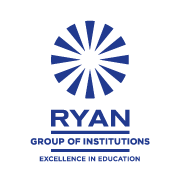The quest for gender inclusivity in curriculums is not just a fight for fairness; it’s an essential building block for nurturing societies that value justice and equality for all. Education, with its unparalleled power to shape minds and attitudes, stands at the forefront of this societal evolution. Within the intricate corridors of schools across India, the lessons learned go far beyond academic knowledge; they are where the foundational beliefs about gender roles and equality are either solidified or challenged.
Spotlight on India: A Closer Look at Gender Inclusivity in Curriculums
In recent years, there has been growing attention on the educational landscape of India, highlighting both strides and stumbles in the journey towards gender equality. Despite some progress, however, it is clear that significant disparities still exist. Furthermore, according to the National Sample Survey Office (NSSO), there remains a persistent gap in literacy rates between males and females. This highlights the urgent need for a more focused approach towards gender inclusivity in curriculums and methodologies.
When women are educated, their countries become stronger and more prosperous. – Michelle Obama
Educators and social reformers across the country echo a unanimous sentiment: education can be a transformative tool for gender equality. By exposing students to diverse perspectives and challenging traditional gender roles, schools can become catalysts for change, shaping the way future generations perceive and engage with the world around them.
But, can education truly make a difference in achieving gender equality? Absolutely. When children learn about gender equality, they learn about respect, empathy, and justice—values that are essential for the harmonious development of society.
The transformative power of education in fostering gender equality is immense. By exposing students to diverse perspectives and challenging traditional gender roles, schools can become catalysts for change, shaping the way future generations perceive and engage with the world around them. In the heart of this transformation is the curriculum—a tool that, if wielded wisely, can sow the seeds of gender equality deeply within young minds.
- Curriculum as a Catalyst for Change
- Overcoming Obstacles to Gender Equality in Education
- Learning from Successes Around Us
- Moving Forward with Actionable Steps
Curriculum as a Catalyst for Change
The curriculum within any educational institution holds the power to shape perspectives, influence beliefs, and mold the future actions of its students. It stands as a testament to the values a society upholds and wishes to propagate among its younger generations. The crucial question then arises: “How exactly does the curriculum influence students’ perceptions of gender roles?” The answer lies in the narratives presented, the histories told, and the voices amplified or silenced within educational materials. Curriculum content that challenges traditional gender stereotypes can encourage students to think critically about their own biases and the societal structures that uphold them.
Breaking Stereotypes: Real-World Examples
Success stories from various parts of the country provide a beacon of hope and a blueprint for action. For instance, some progressive schools have adopted textbooks that feature women scientists, leaders, and artists, thereby normalizing women’s contributions across fields traditionally dominated by men.
For educators looking to foster gender inclusivity in curriculums through their teaching, integrating stories of both male and female achievements in various domains and encouraging discussions about gender roles and equality are starting points. This approach not only empowers educators to be agents of change within their own spheres of influence but also fosters an inclusive classroom environment.
The integration of gender equality into the curriculum can serve as a potent tool for social change. However, this integration must be approached thoughtfully, ensuring that it respects cultural nuances while challenging regressive norms. Success stories from various parts of the country provide a beacon of hope and a blueprint for action. For instance, some progressive schools have adopted textbooks that feature women scientists, leaders, and artists, thereby normalizing women’s contributions across fields traditionally dominated by men, they show us the positive impact that a thoughtfully designed curriculum can have on dismantling gender stereotypes.
To begin with, integrating stories of both male and female achievements in various domains can serve as an effective way to promote gender equality in the classroom. Additionally, encouraging discussions about gender roles and equality can help students to better understand the importance of treating everyone fairly and respectfully. Finally, creating an inclusive classroom environment where every student’s voice is valued is a crucial step towards building a more equitable and supportive learning community. This approach empowers educators to be agents of change within their own spheres of influence.
Overcoming Obstacles to Gender Equality in Education
We face challenges in integrating gender equality into school curriculums despite good intentions. These obstacles are multifaceted, stemming from societal norms, cultural beliefs, and institutional inertia. One might wonder, “What are the biggest hurdles in adopting a gender-inclusive curriculum?” The answer encompasses a range of issues from deeply ingrained stereotypes, lack of resources, to resistance from various stakeholders who are hesitant to change traditional educational narratives.
Societal and cultural barriers often present significant challenges. In many parts of India, traditional views on gender roles are deeply embedded within the community’s psyche, influencing not only the content taught in schools but also the manner in which it’s delivered. These societal norms can subtly discourage the inclusion of gender equality in curriculums, perpetuating a cycle of gender bias and inequality. Overcoming these barriers requires a concerted effort to engage communities, illustrate the benefits of gender-inclusive education, and demonstrate its positive impact on societal well-being.
Addressing myths versus facts about gender equality education becomes crucial in this context. Common misconceptions that such education could undermine cultural values or lead to unnecessary discord must be dispelled with factual information and evidence. The focus should be on highlighting how gender inclusivity promotes a more harmonious and equitable society, benefiting everyone.
The Paradox of Gender in Education
Another major obstacle is the disparity in educational outcomes for different genders in India. Data reveals that girls consistently outperform boys in board examinations, yet their representation in higher education and professional fields remains disproportionately low. This paradox highlights the need for a curriculum that not only promotes academic excellence across genders but also encourages equal participation and opportunities beyond the classroom.
Innovative Solutions: Breaking the Barriers for Gender Inclusivity in Curriculums
The process of revising curriculums to include gender inclusivity in curriculums is often slow and bureaucratic, requiring approval from multiple levels of educational governance. Innovative approaches and pilot programs can serve as effective strategies to demonstrate the feasibility and benefits of gender-inclusive education, paving the way for broader implementation.
The task of integrating gender inclusivity in curriculums in India is undoubtedly challenging, but not insurmountable. By identifying and strategically addressing the barriers that hinder progress, educators, policymakers, and communities can work together to ensure that every child receives an education that truly reflects the values of equality, respect, and inclusivity. As we move forward, it’s essential to carry this momentum into tangible actions and reforms that can transform educational practices and outcomes across the country.
Learning from Successes Around Us
Drawing inspiration from successful models of gender equality in education can provide valuable insights for schools, educators, and policymakers aiming to foster a more inclusive learning environment. Across India and around the globe, there are numerous examples of schools that have broken the mold, integrating gender inclusivity into their curriculums with remarkable results. These stories not only answer the pressing question, “How have some schools succeeded where others are still struggling?” but also highlight the potential for transformative change within educational systems.
In India, certain schools have taken pioneering steps by revising textbooks to include stories of female and male achievers across various fields, thus challenging traditional gender narratives. Such initiatives directly confront stereotypes by showcasing women and men in roles that defy conventional expectations, thereby broadening students’ perspectives from a young age. The Kerala state education board, for example, has been recognized for its efforts to incorporate gender sensitivity into its curriculum, showing how policy-level changes can have a profound impact on the educational narrative.
Inspiring Change: Global Perspectives on Gender Inclusivity in Curriculums

Looking beyond national borders, the Scandinavian countries offer compelling examples of gender equality in education. These nations have long prioritized gender inclusivity, embedding it within their educational philosophies and practices, such as employing gender-neutral language and ensuring that teaching materials reflect diverse family structures and societal roles.
The success of these models lies in their holistic approach, which extends beyond curriculum changes to include teacher training, classroom interactions, and school policies. Educators are equipped with the skills and knowledge to address gender issues sensitively and effectively, ensuring that gender equality is woven into the fabric of everyday learning. This comprehensive strategy underscores the importance of a multi-faceted approach in achieving lasting change.
For schools in India looking to implement gender-inclusive practices, these examples offer both inspiration and practical guidance. The key lies in embracing innovation, challenging norms, and engaging the entire school community in meaningful discussions about gender. By learning from the successes of others, Indian schools can adapt and adopt strategies that resonate with their unique cultural and social contexts, paving the way for a more equitable and inclusive future.
Moving Forward with Actionable Steps
As we reflect on the transformative power of education in promoting gender equality, it becomes imperative to translate insights and inspirations into concrete actions. The journey towards integrating gender inclusivity into school curriculums is complex, requiring the collective effort of educators, policymakers, parents, and students themselves. To ensure that gender equality is not just a theoretical concept but is actually reflected in the daily experiences of students across India, we have outlined actionable steps that each stakeholder can take. These steps will help us make significant progress towards achieving this vital cause.
For Educators:
- Integrate Gender-Sensitive Materials: Incorporate textbooks and resources that showcase diverse role models and challenge traditional gender roles. This includes literature, historical accounts, and current events that highlight achievements across genders.
- Foster Inclusive Classroom Discussions: Encourage dialogues that challenge stereotypes and promote critical thinking about gender issues. Use real-world examples to discuss the impact of gender biases and how they can be overcome.
- Professional Development: Engage in workshops and training programs focused on gender sensitivity and inclusivity. This will equip educators with the tools to handle discussions sensitively and effectively.
How Policymakers Can Ensure Gender Inclusivity in Curriculums:
- Curriculum Reform: Advocate for and implement policy changes that mandate the inclusion of gender equality in the curriculum. This could involve revising educational materials to ensure they reflect gender diversity and equality.
- Support for Educators: Provide resources and training for teachers to effectively integrate gender equality into their teaching practices.
- Monitoring and Evaluation: Implement systems to regularly assess the effectiveness of gender inclusivity initiatives within schools, ensuring that policies translate into meaningful change.
For Parents:
- Promote Gender Equality at Home: Model gender-equal behaviors and discuss the importance of gender equality with children. Encourage them to question stereotypes and appreciate diversity.
- Engagement with Schools: Actively engage with schools to understand how gender equality is being addressed in the curriculum and offer support for initiatives that promote inclusivity.
- Access to Diverse Resources: Provide children with books, movies, and other resources that challenge traditional gender roles and showcase a wide range of perspectives.
For Students:
- Be Curious and Open-Minded: Engage with the curriculum and classroom discussions with an open mind. Question stereotypes and seek to understand diverse perspectives.
- Lead by Example: Practice gender equality in daily interactions and challenge discriminatory behaviors among peers.
- Participate in Gender Equality Initiatives: Get involved in school clubs or community groups focused on promoting gender equality and inclusivity.
The path towards gender inclusivity in curriculums is ongoing and evolves with society’s changing norms and values. By taking these actionable steps, stakeholders can contribute to creating an educational environment that not only teaches but embodies the principles of gender equality and inclusivity. This commitment to change can empower the next generation to build a more equitable world, where opportunities and respect are not limited by gender.
This journey, while challenging, is essential for the development of a society that values and practices equality, respect, and inclusivity at every level.




